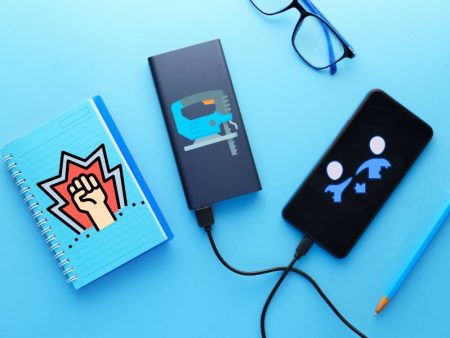You’re staring at your screen at 3 pm on a Tuesday, frazzled, wondering—“Why is refactoring this code taking so long?” I’ve been there too. The grind of debugging, the laundry list of edge cases, the dreaded vanishing of inspiration at 2 pm. But fast-forward to 2025, and suddenly things look different. The dev experience is getting a serious turbo boost from AI.
Let’s walk through this—not as a preachy tech article, but as a conversation between friends. We’ll explore tools, stories, pitfalls, and the emotional tone behind using AI in dev. Ready? Let’s go.
From Idea to Feature in Minutes (Not Hours)
I once tweeted: “Building a hotel booking bot should take me six hours.” Someone replied: “It took me six years.” Harsh? Exactly. But yesterday, I spun up a booking microservice with the help of AI Developer Tools. Yep, twenty minutes from concept to PR.
That’s not hyperbole. Modern AI tools streamline everything:
- Generating boilerplate code
- Writing tests
- Offering documentation summaries
- Even spotting inconsistent variable naming
It’s like having a teammate who’s infinitely patient, never sleeps, and can review your PR in milliseconds.
The Role of AI Pair Programmers
Imagine pair programming with someone who’s brilliant at patterns but can’t interrupt. That’s what tools like Copilot-style assistants deliver.
Me: “Help me write a Python function to generate Fibonacci up to n.”
AI: Writes function & basic tests instantly.
Me: “Add type hints. Also write docstring + edge case handling.”
AI: Does it—accurate and clean.
Me: “Push commit.”
Boom, done. I’m not lazy, I’m efficient.
Real Talk: Jumping Over Developer Friction
Here’s a good one: I spent hours debugging a React hook behavior. Fatigue set in. I typed in:
Me: “Explain why useEffect dependency array causes infinite loop here.”
AI: Analyzed code snippet
AI: “You’re missing cleanup. Also stale closure issue.”
Three minutes later, I’d fixed it. No StackOverflow rabbit hole, no Youtube tutorial time warp. Just clarity.
That kind of friction reduction matters. It keeps you focused and sane—it’s not just convenience.
Non-linear Growth with AI
Back in 2022, growth felt linear—you learned a new framework, built, deployed. In 2025, it feels exponential. Add a new feature? AI scaffolds it. Debug? AI explains. Optimize performance? AI suggests improvements.
I built a feature in Node yesterday, then the React front-end yesterday, and geo caching today—all within three afternoons. Without AI, that’d have been a week’s work.
That’s not hypothetical. That’s happening daily for many dev teams.
The Human Touch (Still Essential)
Don’t think AI replaced me. Because at 5 pm, after building that booking microservice, I sat down to explain its security implications, ethical considerations, and integration nuances to non-technical stakeholders. AI can’t call out, “Hey, GDPR issue with logging personal data!” It might alert, but the judgment call, the tone, the risk framing—that comes from humans.
So AI is acceleration—but humans steer.
Accountability & Bias
I ran an early tool that auto-suggested database queries. It generated SQL that worked—but missed an index. Performance tanked in production. I asked:
Me: “Why slow?”
AI: “No index on column X.”
I fixed it. AI helped catch the blind spot—but the responsibility still landed on me. Tools amplify human mistakes and human insights equally.
We still must code responsibly.
Interactive Learning: AI as Coach
For junior devs, AI is like a coach who doesn’t tire. Write a loop, see if it’s optimal. Ask to explain Big O. Ask to refactor for readability. Ask to rewrite in Go or Rust. At each step, AI explains, guides, corrects.
That conversational learning beats dry tutorials. It’s why devs learn faster, deeper, and with less frustration.
Quick Banter Example
Me: “Okay AI, now write a unit test for the POST /checkout endpoint—should fail if price is negative.”
AI: “Here’s Jest test… but if negative float, you’re okay? Would handling floats be safer?”
Me: “Yes.”
AI: “Here’s updated test with float handling and type checking.”
That question-first behavior is invaluable. The best code often appears when you question before you commit.
Ethical and Security Safeguards
Worried AI might suggest insecure code? me too. But surprisingly many tools now auto-highlight:
- Missing input validation
- Unescaped SQL variables
- Unsecured endpoints
It flags them. You still review—but at least you know the risk exists.
That shift from “not knowing” to “knowing and choosing” is powerful in dev teams.
Non-linear Problem-Solving
Think back to your toughest bug. Now imagine breaking from sequence:
- Paste failing code into AI context
- Ask: “Explain what this does in plain English”
- Ask: “What if I rewrite this as functional pipeline?”
- Prompt for best practices on error handling
- Repeat
That non-linear path—starting with explanation, jumping to refactor, then to error handling—is typical of expert debugging. AI now shapes that conversational debugging synergy.
Emotional Journey on a Release Day
Remember last-month’s release? We hit a bug in production at midnight. Panic ensued. By 3 am:
Me: (still half-asleep) “Why are these API responses 500?”
AI: reads logs, sees missing key mapping
Me: “Got it. Hotfix now.”
That sense of partnership—with something that understands but doesn’t judge—helped me ship that fix without losing my mind. AI isn’t a trophy. It’s a sanity anchor.
Where AI Still Struggles
- Architectural vision: You’re building something new—AI helps draft ideas, but doesn’t organically innovate domain-specific solutions
- Edge-case empathy: AI might miss “What if user travels out of country?”—but humans preempt that
- Code ownership: I still want to read and choose every line. AI is suggestion, not decision
Why Entry-Level Roles Thrive
AI takes grunt work off the table but also raises quality expectations. Entry-level devs now roll out production code sooner—but they also learn to craft good tests, better architecture, clear code. Their early mistakes are less catastrophic because AI filters weak patterns early.
It’s fast-forward through basics, not skipping the foundation.
AI Is Not Magic, It’s Multiplication
If you’re good at prompts, you become 10x faster. If you’re sloppy—you generate spaghetti. AI multiplies what you already have—and that’s a responsibility, not a magic bullet.
I coach junior devs: “Learn patterns first, then prompt AI to generate them. Then read, refine.” That combo yields lightning speed and quality.
Collaboration in Tech Teams
I’ve seen teams using these tools for:
- Auto-generating SDKs from API specs
- Building code scaffolding for new microservices
- Standardized template generation for UI
- Automated test code and documentation
That frees human devs for critical tasks: architecture, integration, stakeholder communication.
The Job Landscape in 2025
Jobs aren’t disappearing—they’re evolving. There’s new demand for “AI Dev Architects” and “Prompt Engineers”—specialists who craft the right instructions, not just write code by hand.
The full-stack dev becomes more full: strategy, system design, secure ops. AI handles the plumbing. Humans paint the house.
A Heartfelt Story
I mentored a dev who hated writing tests—seen as boring. AI-generated tests for them. They started adjusting, studying them—shock revelation: they cared about test coverage now. AI invited them to domain thinking. They found joy in quality.
That’s what we all want: tools that inspire, not just replace.
TL;DR Non-linear Recap
- AI dev tools speed up coding, testing, onboarding
- Humans still lead architecture, empathy, ethics
- It’s a productivity multiplier—not replacement
- Entry-level devs can learn faster with AI coaching
- Collaboration grows deeper, not shallower
- Purpose shifts: from typing to designing, mentoring, strategizing
Final Take
Can AI replace developers in 2025? No. Are devs using AI to build, ship, and learn faster than ever before? Absolutely. Will we look back and wonder how we survived without it? Quite possibly.
**AI isn’t a shortcut—**it’s a partnership. You still steer. You still own the outcome. But it’s far easier to build things, tackle challenges, and stay sane on release day. Let’s code smarter—and embrace the change.
Want to explore these tools in your dev workflow? Drop a comment with your use case, or DM—happy to tinker, pair-program, or coach prompt strategies. Let’s build the future together.


